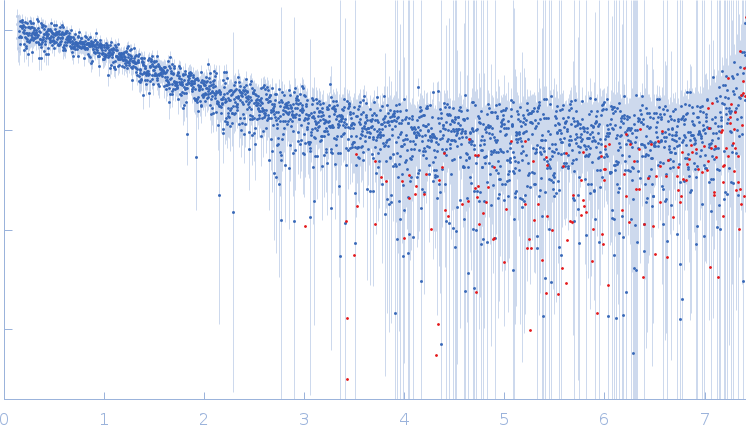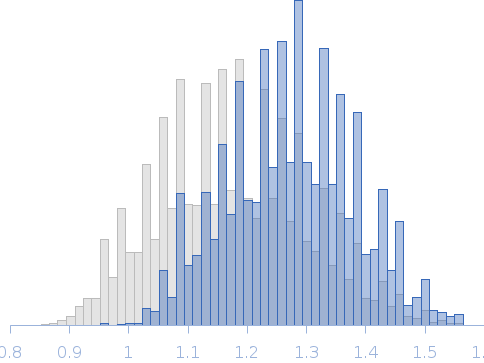|
Synchrotron SAXS
data from solutions of
Segment S(130-143) of the Neurofilament low intrinsically disordered tail domain
in
20 mM Tris, 3 M GdnHCl, pH 8
were collected
on the
EMBL P12 beam line
at the PETRA III storage ring
(DESY; Hamburg, Germany)
using a Pilatus 6M detector
at a sample-detector distance of 3 m and
at a wavelength of λ = 0.124 nm
(I(s) vs s, where s = 4πsinθ/λ, and 2θ is the scattering angle).
One solute concentration of 4.00 mg/ml was measured
at 10°C.
The data were normalized to the intensity of the transmitted beam and radially averaged; the scattering of the solvent-blank was subtracted.
Number of frames = UNKNOWN
|
|
 s, nm-1
s, nm-1
 Rg, nm
Rg, nm